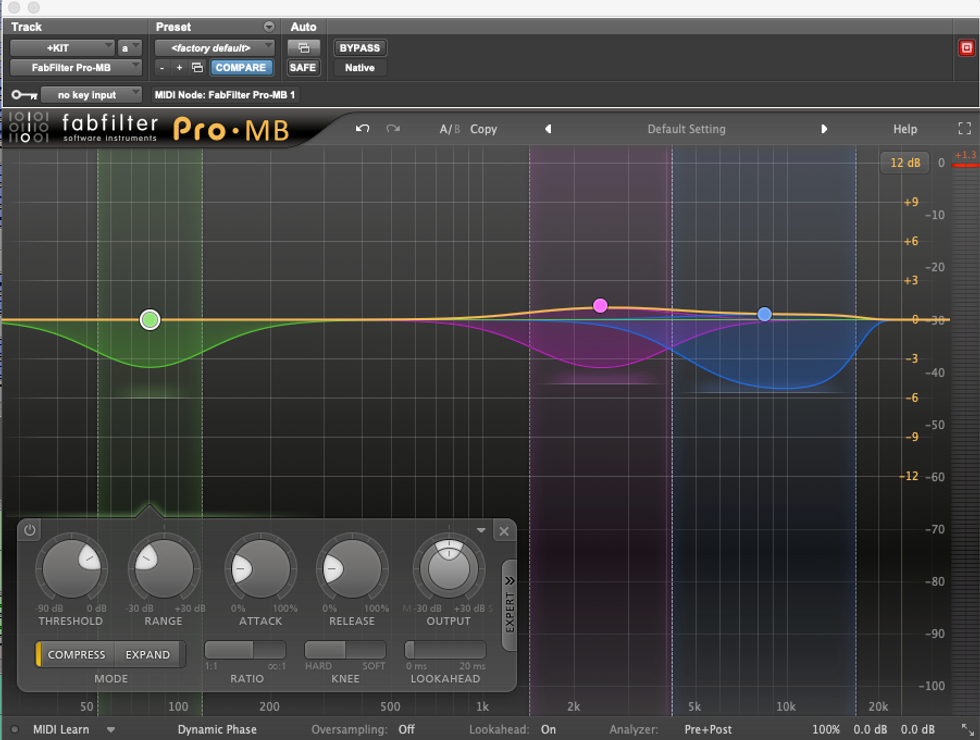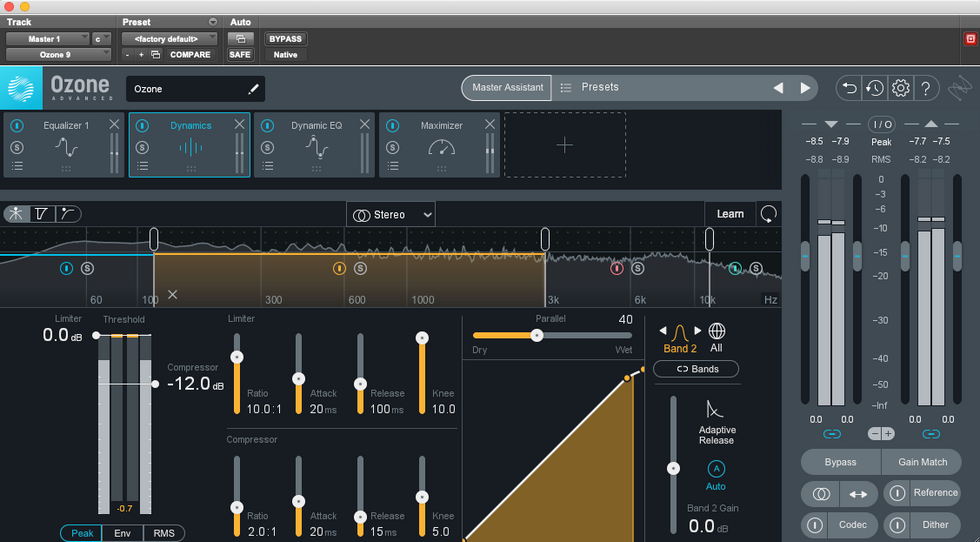Tool Push Button Ice Pick Comes Out Push Again and Goes Back in
Fig. one
Welcome dorsum, everyone. Last time, I shed some low-cal on using a dynamic EQ rather than a multiband compressor. There are many similarities on the surface, only people use them interchangeably with brazen ignorance of what they're designed to do. If y'all ever accept to replace a bolt (say, from your amp chassis or a rackmounted piece of gear), yous measure out the diameter and length of the bolt, head down to your local hardware store, buy a replacement, and drive home. Simply, subsequently several failed attempts to replace the bolt, you might detect that you didn't get the right thread count and it will not screw in under whatsoever circumstances. What I'm saying is: Attending to detail matters. Especially in audio, where the divergence betwixt a expert mix and a great one lies in your choosing the right tool for the job. The Dojo is at present open, and then let's begin.
If you lot missed terminal month's Dojo, I encourage you to read it first. Allow me briefly recap the difference: A dynamic EQ is a robust EQ with some express born compressor capabilities, and a multiband compressor is a full-fledged compressor with the generic ability to EQ areas of the audio spectrum. If you lot keep that stardom in your mind, you make better mixing choices.
In sound, the difference between a good mix and a groovy ane lies in your choosing the right tool for the task.
While a dynamic EQ shines on individual tracks for its power to isolate problem frequencies and tame them, a multiband compressor is really at its best when used on summed groups of tracks (like sub mixes, an aux autobus, and routed track folders) in your DAW or console.
Have a expect a Fig. 1. These are the drum tracks I recorded at Blackbird, the Nashville studio where I work. I've got the 3 kicking mics routed to BC KICK (five slots from left), then routed to +KIT (the light blue slot, far left). The residuum of the 10 pulsate tracks are routed to BC KIT and then to +KIT to merge with the kick drum tracks mentioned before. I do this because I like to process the kick pulsate independent from the other parts of the drum kit. Low-end information (kick drums, bass, low-tuned guitars, bass synths, etc.) are full of free energy and trigger compressors to overreact at the expense of high frequencies. One time all the drums are merged together in +KIT, I apply the FabFilter MB multiband compressor.

Fig. 2
Take a close wait at Fig. two. The three colored compression areas I've set allow me to command the fundamental of the kicking drum (green), the rattle of the snare (purple), and the cymbal splashy-ness (bluish). I tin fix the compression parameters of each of the areas independently and really take advantage of having three compressors working on large areas of the frequency spectrum with every bit much transparency as I desire. I'thousand not squashing things, just gluing the drums together.
I've also added .7 dB boost to the purple area just to bring the snare out a bit more than. This boost is interim only similar an EQ, just I have the benefit of adding very detailed compression parameters that a dynamic EQ isn't really designed to deliver.

You tin use these same principles for groups of rhythm guitar tracks (electrical or acoustic) to help make room for your shredding solos and licks by summing multiple rhythm parts, carving out some space by gently reducing 1.6 kHz to 5.6 kHz (use your ears: this is a very general starting bespeak), and then gently using a multiband compressor on the expanse that y'all choose. You may notice that the vocals too get-go to sit better in the mix.
Finally, await at Fig. iii. I've put the iZotope Ozone multiband compressor on the main stereo mix (aka the ii coach). Hither, I'yard focusing on the low-mids-to-loftier-mids range. This is gluing the bass guitars, electric and audio-visual guitars, B3 organ, and a bit of the vocals gently together. Notice that the sound spectrum is divided into four parts with crossover points at 100 Hz, 2.viii kHz, and 10.6 kHz. (Marked by the capsule shapes on the spectrum visualizer.) I can also solo these areas and really mind to them and adjust the crossover points as needed to serve the mix and the song better.
Now you know the differences between a dynamic EQ and a multiband compressor and have some techniques to effort on your ain mixes and recordings. Go for it! Until side by side time. Namaste.
Source: https://www.premierguitar.com/diy/recording-dojo/multiband-compressor
0 Response to "Tool Push Button Ice Pick Comes Out Push Again and Goes Back in"
Post a Comment